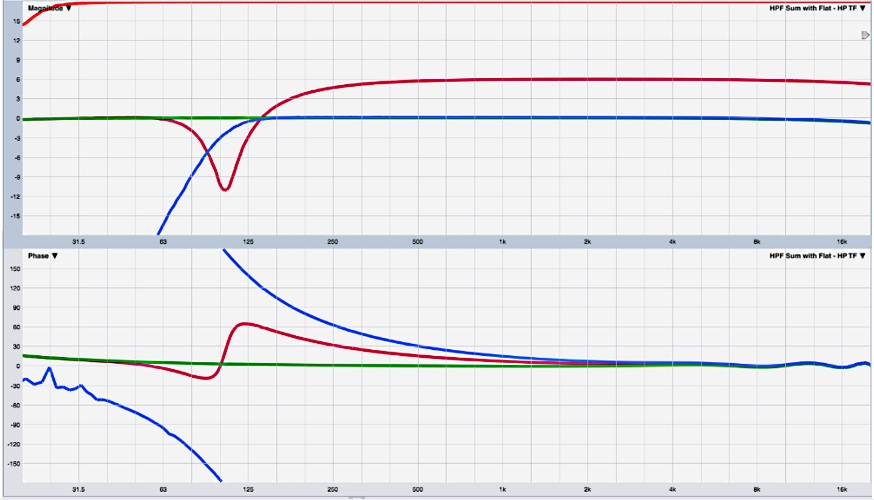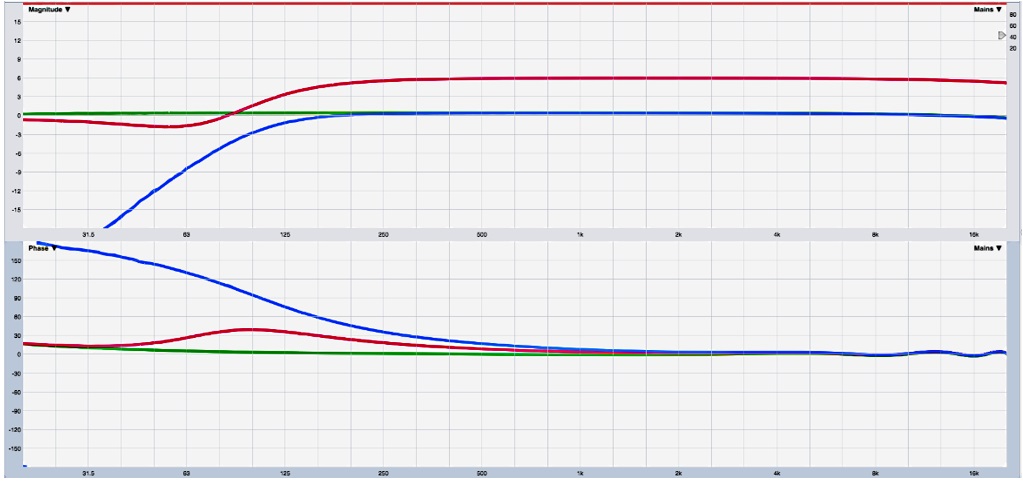The practice of double-patching channels is more common than ever due to modern consoles with high channel counts, but it’s not a recent innovation: a long-standing technique when mixing monitors from front of house has been to use a “Y” cable to split key inputs like lead vocal, which allows the operator to have independent control over the vocal treatment for the monitors without needing to compromise out front.
Spending more time mixing for in-ear monitors, I’ve come to appreciate a different use for double-patching: tonal control. Maybe every band member wants some kick drum in their IEM mix, but the drummer wants a lot of the low-end punch, and maybe the guitar player wants less punch and more top-end slap.
Using two kick mics – in and out – is a great solution here, but not always an option. We can create a similar effect by double-patching one kick mic, low-passing one channel to leave just the fundamental of the drum, and high-passing the other to leave just the beater attack.
Basic Concepts
Conversations about this technique with colleagues prompted me to investigate whether it produces unintended consequences – any time we’re filtering and then summing two coherent signals, we need to be aware of any potential lurking phase demons.
To test this, I patched a signal generator into two console channels, and ran a direct out from each into (Rational Acoustics) Smaart. In the following figures, the green and blue traces show the response of the EQ processing on each channel, while the red trace shows the result of summing both channels into the main mix bus.
In all cases, the results can be summarized by two basic concepts:
1. In the frequency ranges where one signal has a significant level advantage, the summed response will closely match that signal. With large amplitude differences, phase offset becomes irrelevant.
2. In the frequency ranges where the two signals are close in level, we can expect interaction between them. The relative phase offset will dictate the nature of the combined response.
Let’s start by bypassing all EQ on both channels, with the exception of an HPF on one channel (Figure 1). There’s probably no reason to actually do this in practice, but it’s a good look at the underlying mechanisms.

The response dip around 105 Hz is the result of the two signals being close in level but 180 degrees apart in phase. At lower frequencies, the HPF on the blue channel creates level offset, leaving the green channel to dominate the combined response. At higher frequencies, levels are matched, and phase offset approaches zero, so we see the full +6 dB summation that occurs with two coherent signals.
Note that this particular console has fourth order (24 dB / octave) high pass filters, which produce a phase shift of 180 degrees at fc. Consoles using a less steep filter, such as the second order (12 dB/octave) response shown in Figure 2, avoid the deep dip because, throughout the range in which the magnitudes are similar, the phase offset is not large enough to cause cancellation (>120 degrees).














